#Abaca Fiber Market
Explore tagged Tumblr posts
Text
The Abaca Fiber Market will grow at highest pace owing to its increasing use as substitute for glass fiber
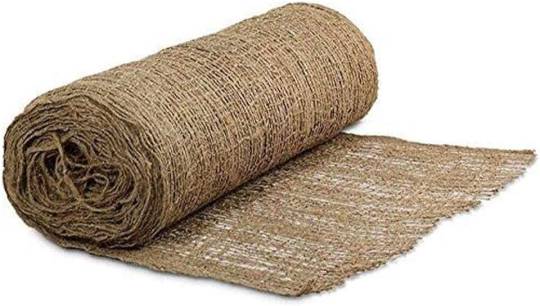
The abaca fiber market is primarily driven by growing adoption of abaca fiber as an alternative to traditional glass fiber in many industrial applications. Abaca fiber, commonly known as Manila hemp, is a natural fiber extracted from the abaca plant. It exhibits high tensile strength, is resilient, durable and unaffected by sunlight, oil and chemicals. This makes it an ideal substitute for glass fiber in manufacturing of various products. The abaca fiber has higher strength than cotton and silk. It is used in the production of twine, rope, carpets, bio-composites and different industrial parts. The Global abaca fiber market is estimated to be valued at US$ 713.0 Mn in 2024 and is expected to exhibit a CAGR of 15.2% over the forecast period 2024 to 2031. Key Takeaways
Key players operating in the abaca fiber market are Wigglesworth & Co. Limited., M.A.P. Enterprises, Yzen Handicraft Export Trading, Specialty Pulp Manufacturing, Inc. (SPMI), Chandra Prakash & Company, Ching Bee Trading Corporation, Peral Enterprises, Sellinrail International Trading Company, DGL Global Ventures LLC, and Terranova Papers. The key players are actively focusing on strategic partnerships and collaborations to expand their production capacities and geographical presence in the global market. The Abaca Fiber Market Growth is witnessing from different end-use industries such as pulp & paper, textile, and construction due to its versatile properties and substituting properties for glass fiber. The market demand is further anticipated to surge over the forecast period. Technological advancements in abaca production such as development of advanced pulping techniques and spinning processes have improved the quality and production of abaca fiber. This is positively impacting the growth of abaca fiber market. Market Trend
Growing adoption of natural fibers: The increasing awareness about environmental protection and sustainable development is propelling the demand for natural fibers such as abaca over synthetic fibers. This trend is projected to continue in coming years. Innovations in product applications: Continuous innovations to enhance the application scope of abaca fiber are helping to drive its adoption. For instance, abaca fibers are now finding increased usage in manufacturing of geo-textiles, automotive parts and 3D printed materials. Market Opportunities
Rising infrastructural activities: Strong growth in infrastructure sector in developing nations of Asia Pacific and Latin America due to rapid urbanization offers significant growth opportunities for abaca fiber market. Development of bio-composites: Ongoing R&D towards development of advanced abaca fiber reinforced bio-composite materials for automotive and construction industries can present lucrative opportunities for market participants. Impact of COVID-19 on Abaca Fiber Market Growth
The outbreak of COVID-19 pandemic has affected the Abaca Fiber market growth negatively. The imposition of lockdowns led to closure of manufacturing facilities and disruption of the supply chain. The production of abaca fiber was halted during the lockdown period which restricted supply of raw material to end use industries. With travel restrictions in place, export and import of abaca fiber was severely impacted thus decreasing international trade. This led to decline in demand from industries such as pulp & paper and textiles. However, with resumption of economic activities, the market is recovering gradually. Companies are now adopting safety measures and maintaining social distancing norms at workplaces to restore normal operations. Though growth prospects look positive in long run, uncertainty around second wave of virus poses challenges in near future. Constant monitoring of situation and flexibility in operations will be key factors for stakeholders to navigate through these testing times. The Philippines accounted for the largest share of Abaca Fiber market in Asia Pacific region in terms of value in 2024. The country is the main producer and exporter of abaca fiber globally. Majority of the world's abaca supply is grown in the Philippines. Abaca plantations are spread across provinces of Davao, Luzon and Western Visayas providing substantial production base. Further, the government is undertaking initiatives to promote abaca farming and boost exports. This is expected to cement country's leadership position in global abaca trade over coming years. Europe was the fastest growing regional market for Abaca Fiber during the forecast period on account of rising environmental awareness and infrastructure development programs. Countries like Germany, UK, France, and Italy have witnessed surge in construction of residential and commercial buildings made from eco-friendly materials. Manufacturers are expanding abaca fiber applications in geotextiles and technical textiles utilized in building & construction sector. Efforts by European Union to reduce single use plastic dependency have accelerated switch to biodegradable abaca composite products in packaging and automotive industries. This has majorly contributed to highest CAGR achieved by European region.
Gets More Insights on, Abaca Fiber Market
About Author:
Money Singh is a seasoned content writer with over four years of experience in the market research sector. Her expertise spans various industries, including food and beverages, biotechnology, chemical and materials, defense and aerospace, consumer goods, etc. (https://www.linkedin.com/in/money-singh-590844163)
#Abaca Fiber Market Size#Abaca Fiber Market Share#Abaca Fiber Market Value#Abaca Fiber Market Analysis#Abaca Fiber#Coherent Market Insights#Abaca Fiber Market
0 notes
Text
The market is likely to be driven by the increased use of abaca fiber in the pulp and paper industry for applications such as cigarette filter papers, tea and coffee bags, and disposable medical and food papers. Additionally, due to qualities such as exceptional high mechanical strength, long fiber length resistance to salt-water damage, and increasing demand for the product in the manufacture of garments, curtains, paper producing, and screen and furnishings, the industry is predicted to rise. The high utilization and adoption across various end use industries is estimated to carve a way for the market's growth.
0 notes
Text
0 notes
Text
0 notes
Text
Marketing Abaca Fiber: Insights from Caraga Region Farmers
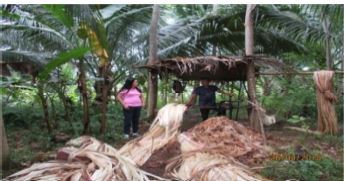
Abstract
The study was conducted to determine the marketing practices and the profitability of establishing Abaca in the Caraga Region. A total of One Thousand Two Hundred Fifty-Six (1256) farmers, Seventy-Seven (77) traders, and three (3) processors were interviewed as the respondents of the study. Their names were obtained from the Philippine Fiber Development Authority (PhilFIDA) and the Municipal Agriculture Office (MAO) of the concerned municipalities of the Region. Data gathering activities included interviews and focus group discussions (FGDs), and stakeholder forums were conducted to validate and gather additional information. The said Focus Group Discussion and Stakeholders’ Forum were attended by the farmers, officers in various cooperatives, traders, representatives from the regional line offices, the Department of Trade and Industry (DTI), Department of Agriculture (DA), Department of Agrarian Reform (DAR) Municipal Agriculture Offices (MAO), Academe, Provincial Agriculture Officer. In the Caraga Region, abaca traders are situated in Agusan del Norte 28 or 36.36%, Agusan del Sur 25 or 32.47%, Surigao del Sur 24 or 31.17% and no traders in the province of Surigao del Norte. The one who sets the price for abaca fiber is the trader/buyer 99.28 % and only 0.71% sets by the farmer. The means of contacting buyers are referrals by the farmers 32.96%; traders will come to the farmers 27.46%, recommended by the Local Government Unit (LGU) 23.88%, and traders who are known by the cooperatives 15.68%. The buyers’ requirements in buying abaca fibers are quality 63.69% and volume 36.30%. Traders engage in buying Abaca for more than 15 years or 38.5%; 1-5 years, 30.12%; 11-15 years, 18.07% and 6-10 years, 13.25%. The means of transporting abaca fiber is through motorcycles 43.37% and hired trucks 56.61%. The estimated monthly volume sold is 1- 5 metric tons or 92.77% and 6 – 10 metric tons. The farmer’s Abaca fibers through Barangay or Municipal Traders, Cooperatives/Consolidators, Baling and Grading Establishment, Processors, and exporters. The issues and concerns for the traders are the following: classification and grading of fiber, cheating abaca bundles where stones inserted to increase weights, abaca fiber not adequately dried, and piles of Abaca are mixed with other fibers. The profitability of abaca farming for 1 hectare /year is the average of P48,000 for a typical farm, while for a good farm is P115,200 – 192,000.

Introduction
The "Manila hemp," known internationally for its world-class fiber, continues to be one of the priority agricultural commodities of the Department of Agriculture (DA). The Philippines supplies more than 87.4 percent of the total abaca fiber market and earns more than $111.33 million in global abaca trade annually (PCA, 2017).
In 2022, as per PhilFIDA data, Caraga ranked third among the top abaca-producing regions in the country with an estimated 10,000 metric tons (MT) of fiber production, next to Bicol Region (1st) and Davao Region (2nd).
Abaca is in great demand in the world market today because of its lucrative value in industries such as making security papers, paper money, ropes, insulators, and other handicrafts. The most important part of the Abaca is the stalk which is the source of the fiber. Abaca fiber is superior to all other natural fibers because of its great strength and its resistance to the action of water. It is three times stronger than cotton, the most potent natural fiber.
The country’s overall fiber production is estimated at 62,640.63MT, remaining the top abaca-producing country, supplying 85% of the fiber demand in the world.
Pulp, which accounts for 69.2 percent market share of the abaca exports, has reported earnings of $ 79.4 million or an increase of 11.7 percent. Abaca cordage, which grabbed a market share of 10 percent, fell to $ 11.4 million. Fiber crafts exports also fell 67.3% to $3.7 million (The Philippine Star, 2016). The pulp manufacturing industry is the leading end-user of abaca fiber, followed by cordage manufacturing and fiber craft industry. It was reported that due to the increasing use of abaca fiber in specialty paper manufacturing, the demand for fiber among pulp manufacturers is constantly surging, and the trend is expected to prevail in 2014-2019. Among the leading abaca fiber suppliers, Ching Bee Trading Corporation dominates the market in the Philippines, followed by Tag Fibers, Inc. and Selinrail International.
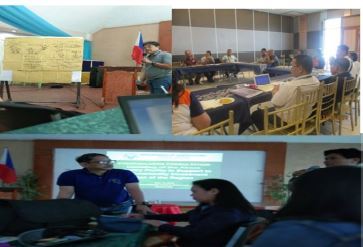
For the past half-decade, the Abaca industry helped boost the country’s economy from its export earnings with an annual average of P4.7 billion, mainly in the Visayas and Mindanao Islands. Abaca fibers are cultivated across 176,549 hectares of farmlands by over 122,758 farmers. Moreover, in recent years, it has been perceived that aside from the substantial contributions of Abaca to the economy, its utilization can also provide numerous ecological advantages (www.philfida.da.gov.ph, 2019).
With the continuing development of the fiber craft industry in the Philippines, the abaca fiber market has been witnessing a boost due to the growing demand for gifts, toys, and housewares. Moreover, increasing consumer inclination for lifestyle products is further expected to strengthen the growth trend for abaca crafts in the coming years. There are only two significant exporters of abaca fiber in the world – the Philippines and Ecuador, with the Philippines accounting for over 80% of the global production of abaca fiber. In the Philippines, the abaca plant is cultivated across 130 thousand hectares of land by over 90 thousand farmers.
Asia Pacific was the largest market for abaca fiber in terms of production and consumption over the past few years, and the trend is expected to continue over the forecast period. The Philippines, the world's largest abaca producer, hold a significant market share in Asia Pacific. A considerable portion of produced abaca fiber in the Philippines is internally consumed, while a substantial amount is exported to various countries, including U.S., Japan, and other European countries. The Philippine government supports initiatives to increase high-quality abaca fiber production levels for domestic consumption and export. This is expected to strengthen its market positioning further and open market opportunities for new players over the next seven years (Erie News, 2019).
Thus, this undertaking is critical to fill the data gaps of the recently conducted Value Chain Analysis of the Commodity in the Region. Profiling tells us the actual scenario of how many abaca farmers engaged in this commodity, what support programs they availed in our present administration, what they need, and what other issues and concerns so that our government can also make some intervention programs for our abaca industry.
Major end-user industries of abaca fiber include paper and pulp, fibercraft, and cordage. The paper and pulp industry is the largest end-user industry for abaca fiber, followed by cordage manufacturing and fiber craft industry. Increasing the application scope of abaca fiber in specialty paper manufacturing is likely a critical factor driving demand for abaca fibers in the paper & pulp industry. The rising market for cordage in industrial applications, including the production of ropes for ships, is expected to boost its demand over the next seven years.
Source : Farmers practices in marketing Abaca fiber in Caraga Region
1 note
·
View note
Text
0 notes
Text
Eco-friendly Furniture Market | Rewriting Long Term Growth Story | Claims Allied Market Research.
Eco-friendly furniture is made up of sustainable material such as cane, bamboo, abaca wood, and teak wood. The eco-friendly furniture also is even made from recycled glass and metal. The padding and upholstery in eco-friendly furniture are done through recycled materials or natural fibers. To beautify the eco-friendly furniture natural dyes, environmental-friendly oils, natural wax, water & soy based finishes are used. The global eco-friendly furniture market has experienced a significant growth, and is expected to grow considerably in next few years owing to the rise in popularity of environment-friendly products.
Request To Sample :- https://www.alliedmarketresearch.com/request-toc-and-sample/13334
COVID-19 Scenario Analysis
The COVID-19 outbreak has shaken economies worldwide. In this scenario, some industries have done extremely well while others have suffered losses. The necessity food market, cleaning & hygiene product market and medical industry are such categories which have witnessed a significant growth. The overall performance of home care and décor market has dropped during the pandemic. It includes bedding products, cushion market, furniture, and other discretionary products. The lockdown in different economies caused impaired supply chain and unavailability of workers & raw materials due to which production and demand both were hampered. The end of the lockdown in the countries is anticipated to bring significantly higher consumer traffic in the eco-friendly furniture market.
Top Impacting Factors: Market Scenario Analysis, Trends, Drivers, and Impact Analysis
The rise in popularity for environmentally friendly home décor items has surged the demand for cane and bamboo furnitures. The increase in awareness of the usage of eco-friendly and recyclable products has influenced consumers to purchase eco-friendly furniture.
The upsurge in disposable income has enhanced the purchasing power of the people living in the countries of Asia-Pacific. People spend more than before on luxury, comfort, and lifestyle products. This changed spending behavior of consumers and rise in their purchasing power have increased the demand for eco-friendly furniture.
The change in lifestyle and increase in modern home renovation further support the growth of eco-friendly furniture market, which influence people to have an outdoor garden and galleries at their home and they buy outdoor bamboo, cane, wood and other eco-friendly furniture to enhance the aesthetic beauty of their home
Request To Customization:- https://www.alliedmarketresearch.com/request-for-customization/13334
The increase in number of clubs, bars, hotels, and commercial buildings along with the growth in real estate construction has further propelled the demand for eco-friendly furniture.
The Global Eco-friendly Furniture Market Trends
New Product Launches to Flourish the Market
Manufacturers are focused on producing new products for specific applications as there are varying demands based on the utilization. The market players have launched new innovative and eco-friendly products by incorporating modern technology in the manufacturing process. For instance, in February 2019, “Print Your City” launched an eco-friendly street furniture made of 100% recycled plastic and carved through 3D printing technique.
Restrains of the Market
A number of drawbacks of eco-friendly furniture especially made of bamboo and cane have restricted the growth of the market.
Wood, cane and bamboo furniture painted with natural dyes are easily prone to pests and insects.
Wood, cane and bamboo furniture cannot be left outside in galleries or gardens during the rainy season.
Eco-friendly furnitures made with recycled materials are easily damageable and it can get cracked easily by putting heavy stuffs on it.
Cane and bamboo furniture come in limited shades and colors as the surface of bamboo furniture are too smooth to hold paint.
LIMITED-TIME OFFER – Buy Now & Get Exclusive 15 % Discount on this Report @ https://www.alliedmarketresearch.com/checkout-final/13cf90c6f3e8340f811412abefe7e4d3
Key Benefits of the Report
This study presents the analytical depiction of the global eco-friendly furniture industry along with the current trends and future estimations to determine the imminent investment pockets.
The report presents information related to key drivers, restraints, and opportunities along with detailed analysis of the global eco-friendly furniture market share.
The current market is quantitatively analyzed from 2020 to 2030 to highlight the growth scenario of the global eco-friendly furniture market.
Porter’s five forces analysis illustrates the potency of buyers and suppliers in the market.
The report provides a detailed global eco-friendly furniture market analysis based on competitive intensity and how the competition will take shape in coming years.
About Us:
Allied Market Research (AMR) is a full-service market research and business-consulting wing of Allied Analytics LLP based in Portland, Oregon. Allied Market Research provides global enterprises as well as medium and small businesses with unmatched quality of "Market Research Reports" and "Business Intelligence Solutions." AMR has a targeted view to provide business insights and consulting to assist its clients to make strategic business decisions and achieve sustainable growth in their respective market domain.
Pawan Kumar, the CEO of Allied Market Research, is leading the organization toward providing high-quality data and insights. We are in professional corporate relations with various companies and this helps us in digging out market data that helps us generate accurate research data tables and confirms utmost accuracy in our market forecasting. Each and every data presented in the reports published by us is extracted through primary interviews with top officials from leading companies of domain concerned. Our secondary data procurement methodology includes deep online and offline research and discussion with knowledgeable professionals and analysts in the industry.
Contact:
David Correa 5933 NE Win Sivers Drive #205, Portland, OR 97220 United States USA/Canada (Toll Free): +1-800-792-5285, +1-503-894-6022 UK: +44-845-528-1300 Hong Kong: +852-301-84916 India (Pune): +91-20-66346060 Fax: +1(855)550-5975 [email protected]
Web: www.alliedmarketresearch.com
Allied Market Research Blog: https://blog.alliedmarketresearch.com
Follow Us on | Facebook | LinkedIn | YouTube |
0 notes
Text
A look at 15 of the world's most important animal and plant fibers

This article provides an overview of 15 of the most important animal and plant fibers. The range of fibers includes cotton, the main source of fibers in the world, and other specialty fibers like cashmere, which, although produced in lesser quantities, possess distinct characteristics that put them in the market for luxury textiles.
The plant fibers comprise seed hairs such as cotton and stem (or bast) fibers, like hemp and flax; leaf fibers like sisal; and husk fibers found in coconut.
Animal fibers are hair, wool, and secretions, including silk.
Read Mélange meaning fabric
Plant fibers
Abaca is a leaf fiber composed of slim, long cells that form part of its supporting structures. The amount of lignin is high, 15 percent. Abaca is sought-after for its outstanding mechanical strength, buoyancy, resistance to damage from saltwater, and length of fiber up to 3 meters. The highest Abaca grades are very fine shiny, lustrous, light in color, and extremely durable. It was once a popular source of rope used in the rigging of ships; abaca has shown potential as a green alternative to glass fibers in vehicles.
Coir: Among vegetable fibers, Coir has one of the largest levels of lignin. This makes it more durable but less flexible than cotton and unsuitable for dyeing. Coir's tensile strength is not as strong as the abaca fiber, but it has excellent resistance to microbial activity and saltwater damage. A coarse, thin fiber extracted from the coconut's outer shell, Coir can be found in mattresses, ropes, geotextiles, brushes, and even automobile seats.
Cotton: It's nearly pure cellulose with breathability and softness, which are the main reasons for it being the world's most popular natural fiber. Fiber length ranges from 10 to 65 millimeters, and its diameter ranges between 11 and 22 microns. It can absorb moisture quickly and makes cotton clothing more comfortable in hot temperatures as well as its capacity in detergents ensures that they're easy to clean. It is the most extensively used natural fiber and remains an undisputed "king" in the textile industry worldwide.
Flax is similar to cotton in that flax fiber is a cellulose-based polymer; however, its structure is more crystallized, which makes it more durable, crisper and more rigid to work with, and less prone to wrinkle. Flax fibers are available in lengths up to 90 centimeters, typically between 12 and 16 microns across. The fibers absorb water and then release it swiftly, making linen easy to wear in hot temperatures. One of the strongest plant fibers, flax, was among the first fibers to be spun, extracted, and weaved into textiles.
Hemp: Long, sturdy, and long-lasting Hemp fibers comprise around 70% cellulose. They
have very little lignin (around 8-10 percent). The diameter of the fiber is between 16 and 50 microns. Hemp fiber is a heat conductor and dyes well, is resistant to mildew, blocks UV light, and has natural antibacterial properties. The shorter, more woody fibers ("tow") have more lignin. It is easy to grow without the use of agrochemicals. Hemp is being used more and more in Agrotextiles, car panels, and fibreboard, as well as "colonized" in clothing.
Jute is known as"the "golden fiber" Jute is soft, long, and shiny and has a length of 1 to 4 meters and a diameter of 17-20 microns. It is among nature's strongest fibers from plants and is just behind cotton in the amount produced. Jute is extremely insulated and has anti-static qualities, moderate moisture retention, and very low conductivity to heat. Strong threads made of jute fiber are utilized worldwide in sackcloth. They also help provide the basic needs of millions of small-scale farmers.
Ramie: It's transparent with silky-luster-like flax in absorbency and density. However, it's more coarse (25-30 millimeters). It is one of nature's most incredibly elastic fibers; it's also very soft and dyed quickly. Ramie strands can be from 190 to 190 cm long, with cells as tall as 40 centimeters. The trans-fiber fiber fissures in ramie make it bri but also favor air circulation. Although it isn't widely known outside of the East Asian countries that produce it, ramie has lightweight and silky. It is designed to be used in the heat of summer.
Sisal: Glamorous and creamy white, sisal fiber measures as long as 1m with an average diameter of between 200 and 400 microns. Sisal is considered to be a rough fibrous fiber that is not suitable for fabric or textiles. However, it is strong, flexible, durable, and stretches easily. It doesn't easily absorb moisture and is resistant to saltwater degradation, and has a smooth surface that can take an array of dyes. A bit rough for upholstery and clothing, sisal is being used to replace glasses in the composite material used in the production of furniture and cars.
Animal fibers
Alpaca is a bit hollow, ranging from 20 to 70 microns thick, and is available in 22 natural colors. It is lighter, more durable than sheep's wool, and is a great insulation. Huacayo alpacas create soft long, dense fibers. Meanwhile, the Suri's fleece is shiny, silky, and straight. Alpaca mixes well mohair, wool, and silk. It is soft and dense. Silky and shiny alpaca is used to produce high-end luxury fabric and outdoor sportswear.
Angora Hair: The silky white hair of the angora is a hollow fiber classified as wool. It is among the silkiest animal fibers, with a width of around 14-16 microns. Angorawool is extremely comfortable to the touch because of its low-relief cuticle scales. Silky, fine, and extremely smooth to the touch. The wool of that of the Angora rabbit is utilized in top-quality knitwear.
Also Read What’s Natural Cotton?
Camel: Fine down fiber found in the Bactrian camel has an average of 20 microns in size and ranges in length between 2.5 to 12.5 cm. Baby camel hair that can be as small as 16 microns (on the same level as fine cashmere) is the softest and most sought-after. It's high value and quality make it used in luxurious textiles. The finest quality fiber is made using drop spindles by women in nomadic households in Mongolia in Mongolia and Inner Mongolia, China.
Cashmere US Standards set an average diameter of cashmere's fiber that is no greater than 19 microns. The best quality fiber is 14 microns. It is naturally crimped, which allows the fiber to spin into fine and light fabric. Cashmere has tiny air pockets between the fibers that allow it to be warm without weight, as thin cuticle cells that line the fiber's surface make it shiny and smooth. It's rare, luxurious, and costly: the wool of 6 Kashmir goats can be enough to create one sports coat made of cashmere.
Mohair is light and insulating. Its tensile strength is considerably superior to the strength of Merino wool. Like wool, mohair also has surface scales. However, they are smaller, which makes them soft to the touch. Light-reflecting off of the surface gives mohair its distinctive Lustre. The thin surface scales make mohair soft to the touch, and the light reflection from its surface creates a distinctive shine.
Silk's filament is a continuous thread with a high strength that ranges from 500 - 1500 meters long and has a thickness of 10-13 microns. When woven, the fiber's triangular shape acts as a prism, which reflects light and gives silk cloth its coveted "natural sparkle." It's a great absorbent material with low conductivity and dyes quickly. The process was first developed in early China and used only by high-ranking officials; silk remains the "queen of textiles."
Wool has natural scale patterns and crispiness, which make it simple to spin. Wool fabrics have more bulk, are more insulating, and are supple, elastic, and long-lasting. The diameter of the fiber ranges from 16 microns in superfine wool (similar to cashmere) up to 40 microns for coarse, hairy wools. The limited supply and exceptional properties have made wool the world's best textile fiber.
0 notes
Text
0 notes
Text
Hemp - The Most Eco-Friendly Fabric For Furniture?
There has been a great deal of promotion recently concerning material building as well as the different products where it is made. "Synthetic" fabrics made from oil feed-stocks have actually been panned as not lasting. There has actually been progress in making these type of textiles from bio-based oil derivative basic material, however not much is being done commercially.

"Organic" cotton has obtained a lot of press too, but the integral issues in creating cotton remain. The lengthy warm growing period, the copious quantity of water needed for the plant, as well as the vulnerability to a selection of parasites as well as illness require a lot of treatment by the farmer, whether with herbicides as well as chemicals or equivalent amounts of organic choices. Some other "quick renewal" fabric items are currently on the market such as bamboo, abaca, linen, and fabric made from various other lawns. Their rapid development indicates they soak up a lot of carbon in the atmosphere promptly, yet especially in the case of bamboo, the toxic chemicals needed to separate the fiber from the various other plant product before it can be woven, is problematic. There is one rapidly expanding all-natural product that offers itself nicely for textile that is eco-friendly from a growing and also processing perspective. The product is mainly grown in Eastern Europe and also Asia where subsistence ranches make it a cash crop. I am speaking of hemp-a fiber that has actually been expanded by people considering that primitive times for its fiber, oil, medicinal high qualities, and as a base for soaps, creams, creams and shampoos. Every year, an acre of land will generate as much fiber as 2-3 acres of cotton. The fiber is more powerful and also softer than cotton, lasts two times as lengthy in use, as well as will not mildew. Historically most hemp fiber was used for rope (ropes) and the many weird names for aquatic ropes stem from the different certain fiber blends and also strengths for details on board ship makes use of. Hemp Derived Thc grows in a much broader climate variety than cotton as well as is frost forgiving. In addition to the fiber for fabrics, hemp can be used for paper, cardboard, a plastic replacement as well as also as gas (believe bio-diesel). It is interesting to keep in mind that in the United States most paper is made from tree fiber-which take years to grow to harvestable dimension. A hemp crop can be harvested in 120 days as well as calls for no hazardous chemicals to release the fiber from the pulp. (Any individual who has actually passed an operating paper mill will certainly connect to this!) Hemp fiber is launched mechanically by heavy steam and also machinery. It is stressful that hemp has actually been unlawful to expand in the US considering that the 1930's, and made more stringent regarding a years earlier. Its relative, marijuana, has essentially equivalent fallen leave and stem structure, but Cannabis Hemp Thc Edibles(Indian hemp) does not have the THC material that makes marijuana such a social issue.
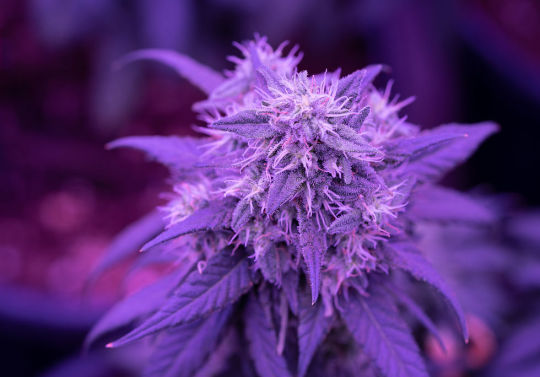
Most nations in the EU, plus Canada as well as Australia, permit industrial hemp to be expanded. In Eastern Europe and also Asia, hemp has actually always been a legitimate crop that replenishes the soil as well as does not require pricey herbicides and chemicals. Nevertheless, commercial hemp is lawful for import as well as sale in the United States, yet illegal to grow as a residential plant. This state of affairs indicates that American consumers can gain from the green nature of the product, when utilized in their clothes or furnishings, as well as are sustaining mainly third world agricultural initiatives to be self-sufficient as well as enriching their standard of life.
0 notes
Text
Essential Fabrics for a Fashion Brand: Key Materials to Consider
Choosing the right fabrics is essential for any fashion brand to succeed. The fabrics used in clothing can make or break the design, comfort, and overall quality of the garment. With so many options available, it can be overwhelming to determine which fabrics are the most essential for your brand. In this article, we will explore the key fabrics that are essential for a fashion brand and provide insights into their unique features, benefits, and applications. Whether you are just starting out or looking to expand your product line, this guide will help you make informed decisions about the fabrics you choose for your brand.
Fabric is an indispensable ingredient when you start building your own brand. Each fabric you choose plays an important role in defining the fashion style of the project and creating a unique accent for the product.
There are many types of fabrics on the market with different functions, quality, and performance. Even though the composition of the fabric has many different groups, from fabrics made from natural fibers such as cotton, flax,…to fabrics obtained by the synthesis of chemical fibers such as polyester, nylon, etc..
In addition, natural cotton fibers are also used to create knitted fabrics or yarns used for knitted products such as sweaters, cardigans, winter gloves, and many more.
Choosing the right fabric for the project and the audience your brand is aiming for is therefore difficult. Choosing the wrong fabric for a project can lead to negative feedback from customers.
A good example that many brands are prone to fall into is using too much leather in a summer outfit. Leather fabric can bring personality to an outfit, but besides that, leather fabric is a very good heat-retaining fabric. So the use of leather fabric too much in the design will make the wearer feel hot on hot days like summer.
Our article below will give you an overview of the most popular fabrics—fabrics with specialized properties for use in different designs, so you have a lot of choices. fabric for your designs as well as your own brand.
https://garment.dony.vn/wp-content/uploads/2022/11/1-Fibers-from-natural-materials.jpg
1The process from fiber to fabric
To make the products that make a name for the brand, you must first start the journey with fiber. Fiber can be synthesized from materials of natural origin, such as vegetable fibers or fibers synthesized from animal fur and skin, or obtained from synthetic fibers derived from petroleum and synthetic materials.
Fibers from natural materials
Vegetable fiber
Cotton
Bamboo yarn
Linen yarn
Kapok yarn
Lotus silk thread
Banana silk yarn
Pineapple yarn
Yarn made from orange peel
Coconut fiber yarn
Hemp yarn
Jute
Ramie yarn
Abaca yarn
Fiber from animals
Silk yarn
Wool yarn
Alpaca yarn
Angora yarn
Cashmere yarn
Qiviut yarn
Vicuna yarn
Llama
Horsehair yarn
Mohair yarn
Sea silk fiber
https://garment.dony.vn/wp-content/uploads/2022/11/2-Mineral-fiber.jpg
Mineral fiber
Asbestos fiber
Glass fiber
Basalt yarn
Metallic thread
Synthetic fiber
Nylon Yarn
Polyester yarn
PVC yarn
Acrylic yarn
Aramis yarn
Olefin fiber
Spandex yarn
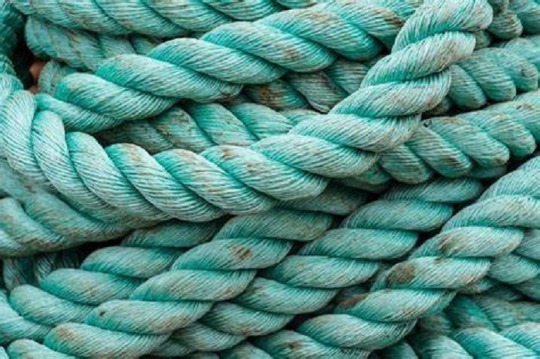
Semi-synthetic yarn
Protein fibers
Soybean protein fiber
Milk Casein Yarn
Man-made fiber
Yarn PA
PU yarn
PVA yarn
PE yarn
PAC yarn
Artificial silk yarn
Acetate Yarn
https://garment.dony.vn/wp-content/uploads/2022/11/5-Knitting-method.jpg
2Ways to turn fiber into fabric
Once you’ve got the yarn you want, the next step is to figure out how to turn the yarn into pieces large enough to be designed into a costume for your project. Depending on the elaborateness and spirit of the project, you can choose different ways.
Knitting method
This method is especially popular for winter projects where there are many different styles of knitting with varying thicknesses, so you can choose from a variety of styles for the project. For example, knits with a loose texture add softness to the design, or knits with a denser texture create a chic and warm spirit for cold days.
https://garment.dony.vn/wp-content/uploads/2022/11/6-Hides.jpg
Hides
This is a term that refers to animal skins that have been dried or tanned for use in fashion. Hides cover all skin types with and without surface hairs. Hides also include furs and furs harvested from animals that have hair as soft as wool or horsehair.
Leather
It is a fabric made from animal skin that has been removed by various methods. With this leather fabric, one can take the furry outer skin and clean the entire cage on the surface and then put it into use, or use the inner suede of the animal, which is softer.
https://garment.dony.vn/wp-content/uploads/2022/11/7-Leather.jpg
Skins
Obtained from smaller animals such as goats or sheep. This fabric is thinner than hides as well as softer and feels good in contact with the wearer’s skin.
Hides
Hides are obtained from the collection or skin of large animals such as cows. The length of animals with hides is called a hide, and the length must be 1 m or more. The nature of this skin type will be thicker than the skin, and the ability to keep warm is also great.
https://garment.dony.vn/wp-content/uploads/2022/11/8-Hides.jpg
3How to choose the right fabric
The most important thing when choosing fabrics for a project is to choose fabrics that meet the properties as well as the correlation of the fabric with the design of the project. Remembering the characteristics of each fabric is extremely important because the texture of each fabric is different, so the use is also different.
For example, if you have a fashion project for the summer, make sure the fabric you use has good breathability properties so it can be used on hot days. Likewise, if you decide to launch a collection geared towards winter weather, fabrics with good warmth properties should be of the utmost concern.
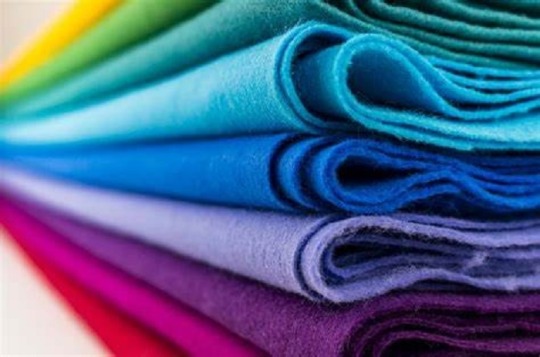
The combination of two or more fabrics is quite common for many fashion designs, whether it is a combination of fabrics with similar properties or completely different in nature, creating accents for the outfit. But you need to make sure that the combination will give a harmonious whole and not be too dependent on a certain property of the fabric.
4Final words
Each project needs to use the most appropriate fabrics that can bring out the spirit of the collection and resonate with the brand. We really hope that our information can give you new perspectives and help you make good choices for your future projects.
Source: https://garment.dony.vn/the-main-fabrics-that-are-essential-for-a-fashion-brand/
0 notes
Text
Abaca Fiber Market Size Worth $1.7 Billion By 2028 | CAGR: 15.1%
Abaca Fiber Market Size Worth $1.7 Billion By 2028 | CAGR: 15.1%
Abaca Fiber Market Growth & Trends The global abaca fiber market size is expected to reach USD 1.7 billion by 2028, according to a new report by Grand View Research, Inc. The market is expected to expand at a CAGR of 15.1% from 2021 to 2028. Growing emphasis by governments across various countries towards the adoption of natural fibers is expected to drive market growth as a substitute for…
View On WordPress
0 notes
Link
1 note
·
View note
Text
Abaca Fiber Market Demand By Product, Region And Forecast To 2028 : Grand View Research Inc.
Abaca Fiber Market Demand By Product, Region And Forecast To 2028 : Grand View Research Inc.
San Francisco, 10 March 2022: The Report Abaca Fiber Market Size, Share & Trends Analysis Report By Product (Pulp & Paper, Fiber Craft, Cordage, Textile), By Region (North America, Asia Pacific, Europe, Central & South America, MEA), And Segment Forecasts, 2021 – 2028 The global abaca fiber market size is expected to reach USD 1.7 billion by 2028, according to a new report by Grand View…
View On WordPress
#Abaca Fiber Market#Abaca Fiber Market 2021#Abaca Fiber Market 2028#Abaca Fiber Market Revenue#Abaca Fiber Market Size
0 notes